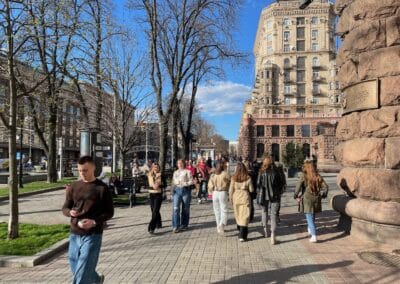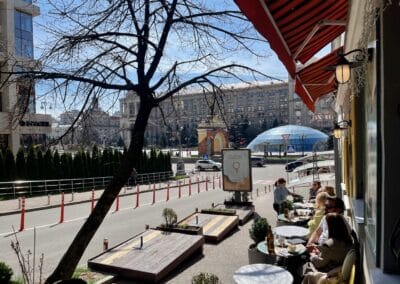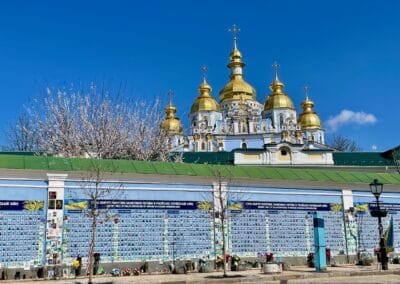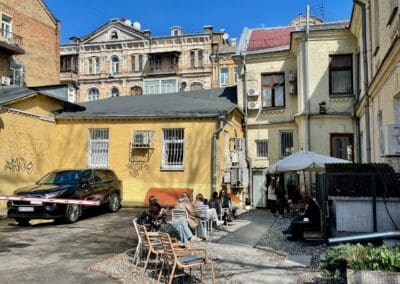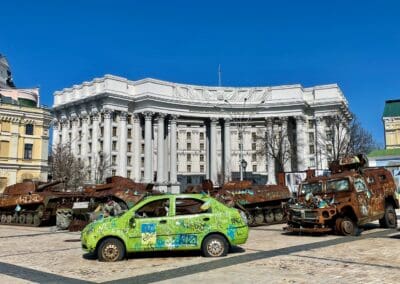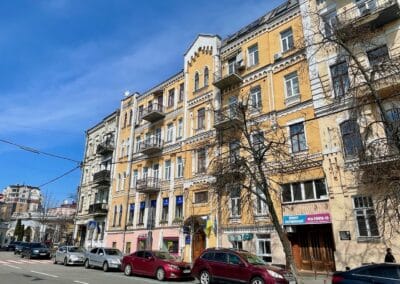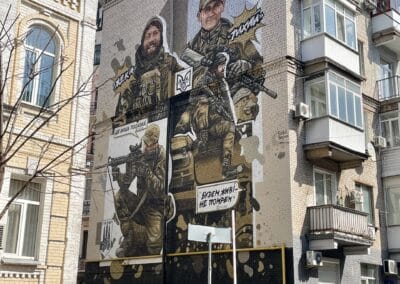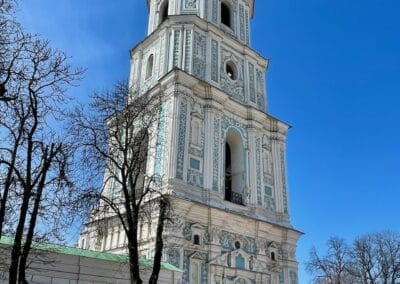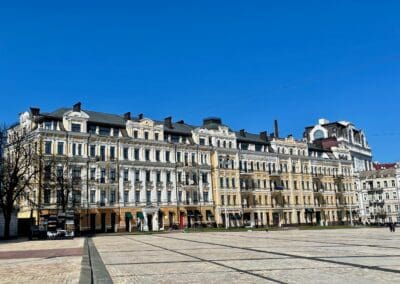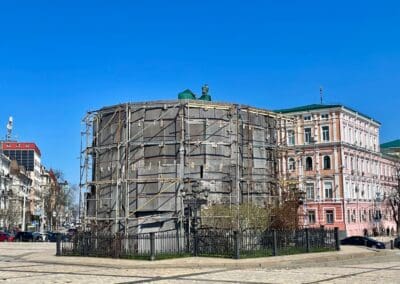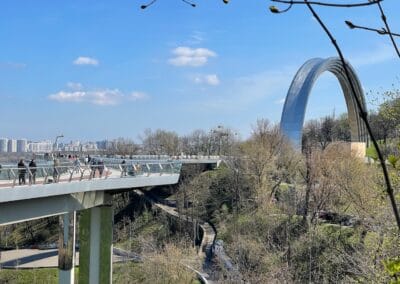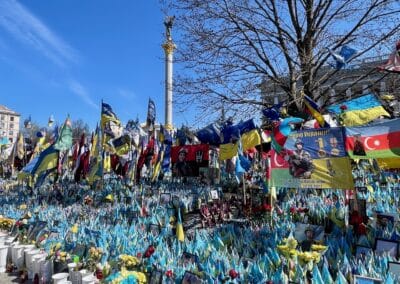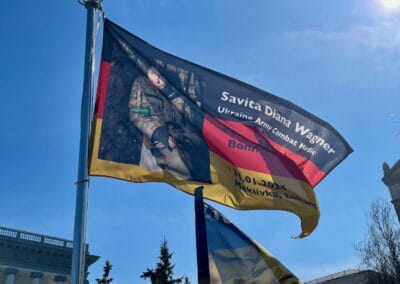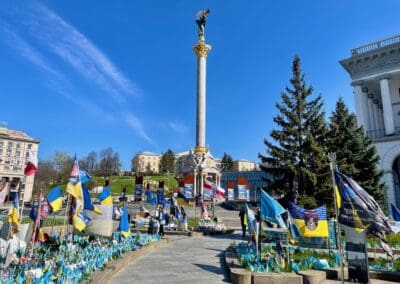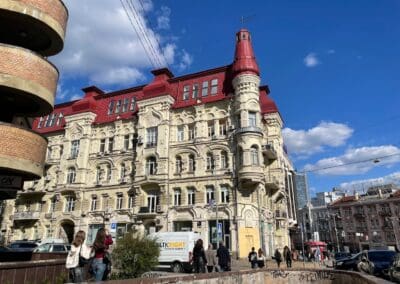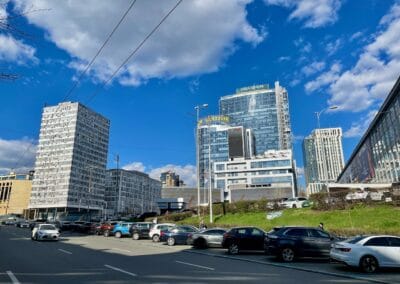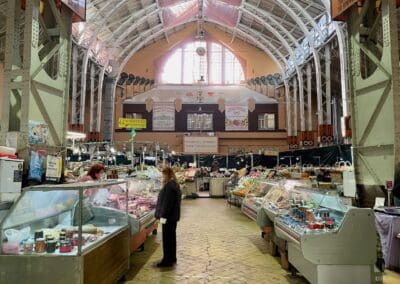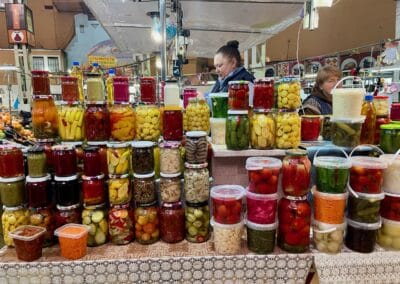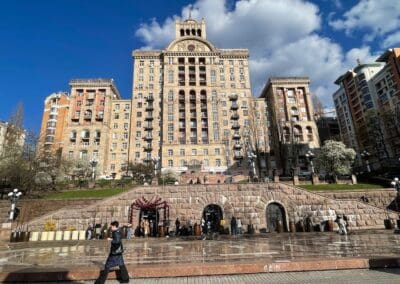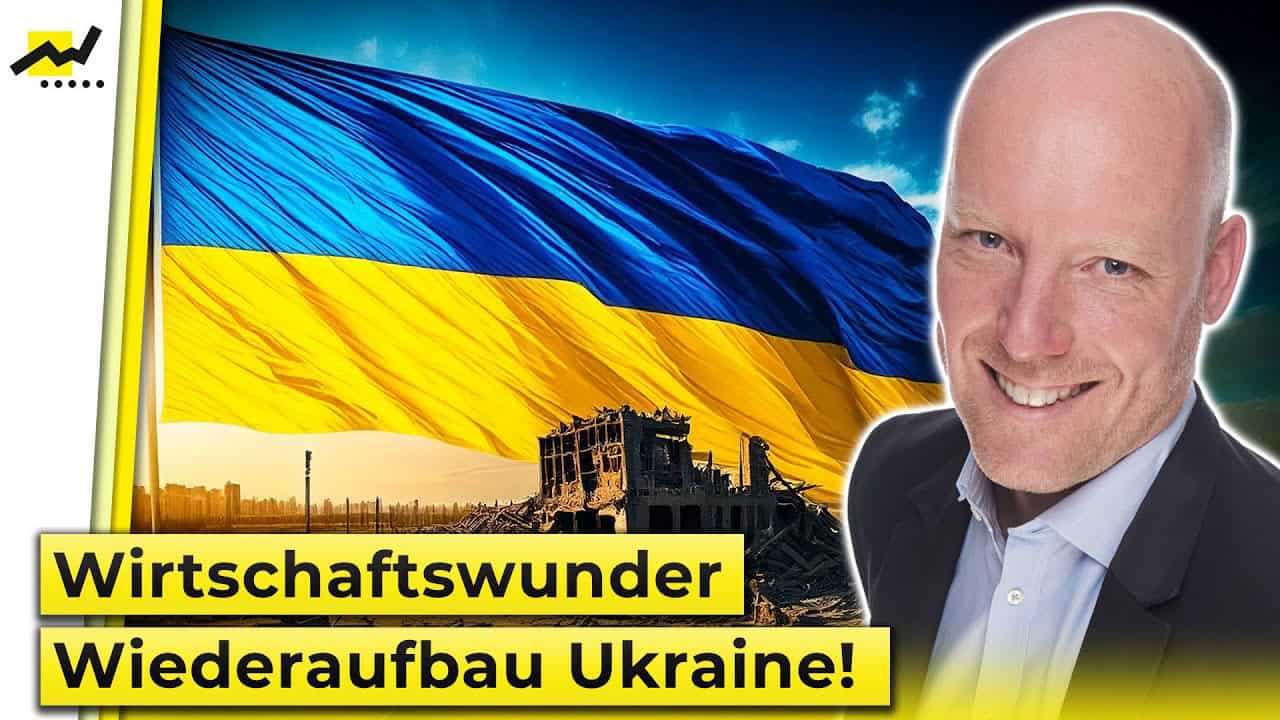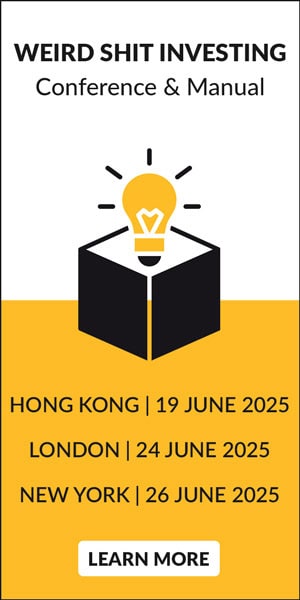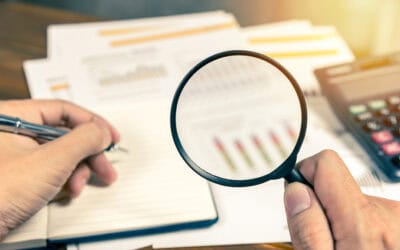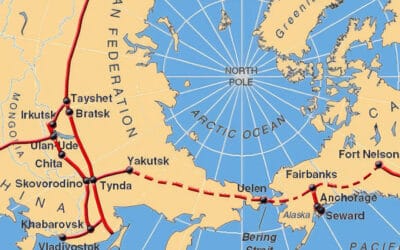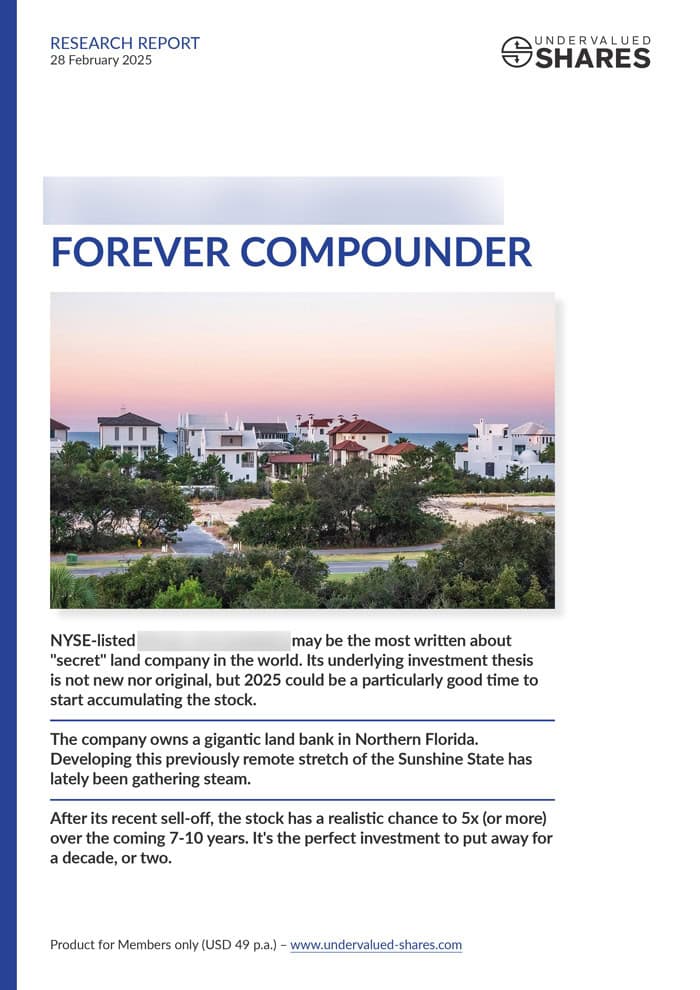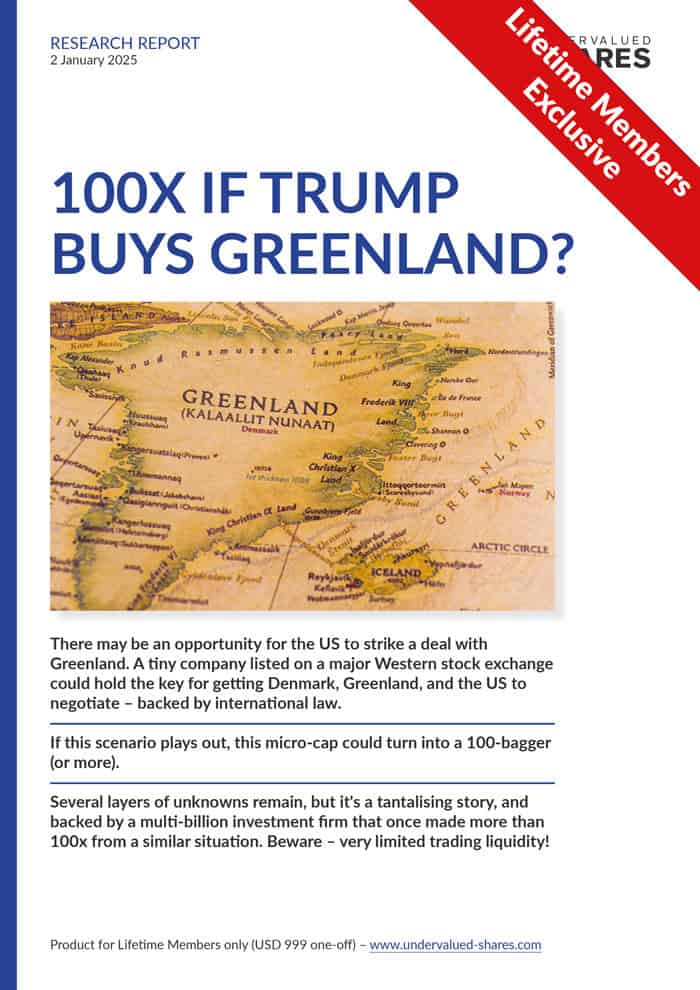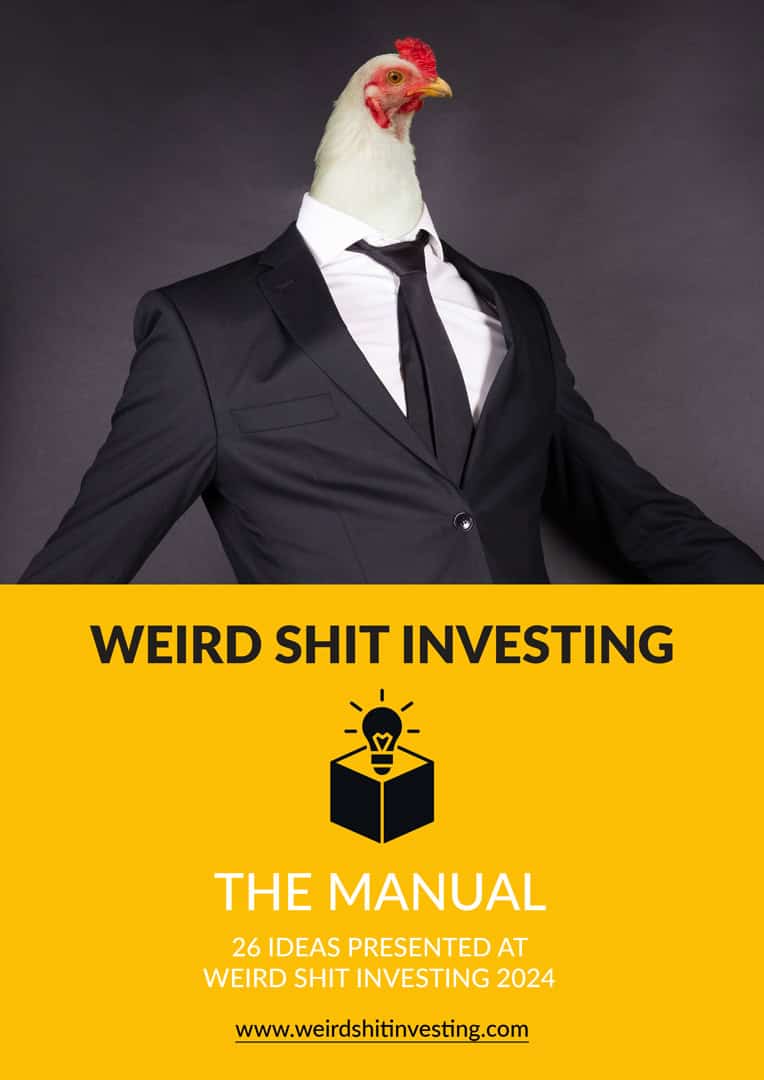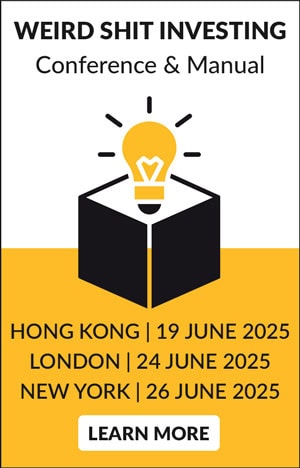Image by Tada Images / Shutterstock.com
Nothing beats going places to do research, even in the age of the Internet and AI.
My recent publications about investing into the reconstruction of Ukraine generated tremendous interest.
However, investment options are limited, and it's difficult to get an idea of the 'real' situation on the ground.
What would have been more obvious than hopping on a train and visit?
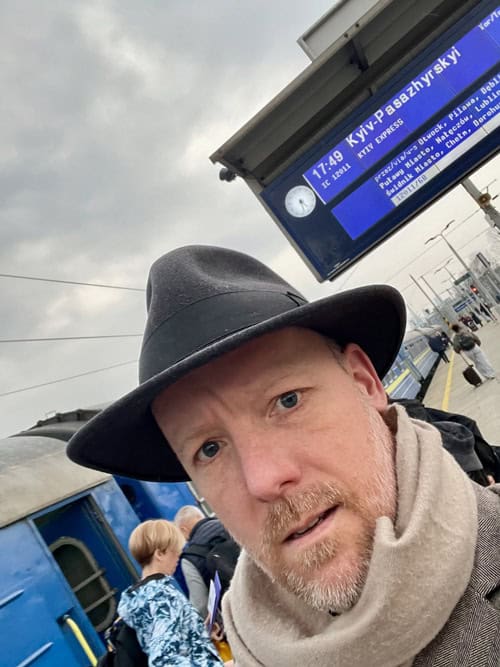
Yours truly on the way from Warsaw to Kyiv.
A journey with rewards
Visiting Kyiv, Ukraine's capital, is not actually all that difficult, even under the current circumstances.
Anyone with a decent passport can head there by bus, train or car (for obvious reasons, no commercial flights are currently operated). No visa is required to enter Ukraine.
The most comfortable way is also the most difficult to organise. Once a day, a night train sets out from Warsaw to Kyiv, getting you there in 16 hours. Because of strong demand, single cabins are no longer offered; instead, everyone travels in compartments with three bunk beds. There is no restaurant onboard, and the only goodie available from staff is tea. The train is reminiscent of travelling in Central and Eastern Europe right after the Berlin wall came down. Tickets need to be booked three weeks in advance and are in high demand.
In the depth of night, you'll spend several hours awake because of passport control and the noisy changing of the train's gauge from the European format to the Russian format.
Put simply, this is advanced-level train travelling.
However, staff are helpful and the other passengers very respectful. It probably helps that 80%+ of passengers tend to be women. I shared my compartment with a 20-year-old Ukrainian lady who had researched every feature of the train through TikTok videos, and a 40-year-old Ukrainian lady who is married with children in the UK and visited for the first time since the war began. As soon as the train leaves the station, the staff arrange the bunk beds. The compartment is very tight, and that's before you take into consideration the non-existing luggage storage on the train. You have no other option but to spend the next 16 hours horizontally – speak of earning your research results!

That said, the journey can be its own reward. My train had a real "we are in this together"-atmosphere to it, and the trip gave me the necessary time to read a book on Ukraine that one of my readers had recommended to me after visiting Kyiv as part of an investment delegation (you know who you are – thanks!).
As I learned from said book, in the 1990s Ukraine was expected to advance more than other nations in the region. Who knew?
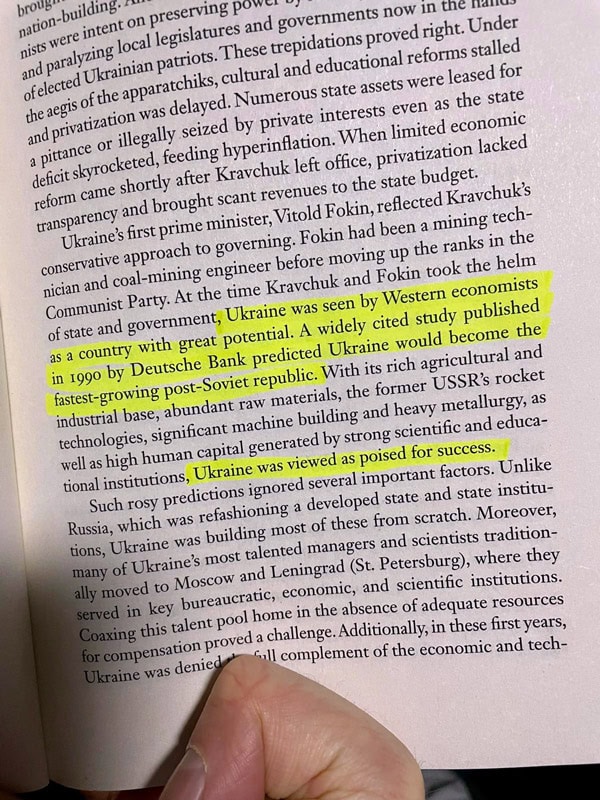
By the time the train spits you out the other end, you'll already have gained a different understanding of the situation.
For once, you'll have noticed just how vast Ukraine's landmass is. Gleaning out of the train window to see mostly nothing, you start to understand how much space the country has relative to its population size.
You are also in for a few surprises. Who knew customs control officers in a war-torn country can be as friendly as the ones checking entrants to Ukraine? German passport control staff in Frankfurt Airport could learn a lesson from them.
That said, there is no way you would not breathe a big sigh of relief when you get off in Kyiv. It's a LONG trip.
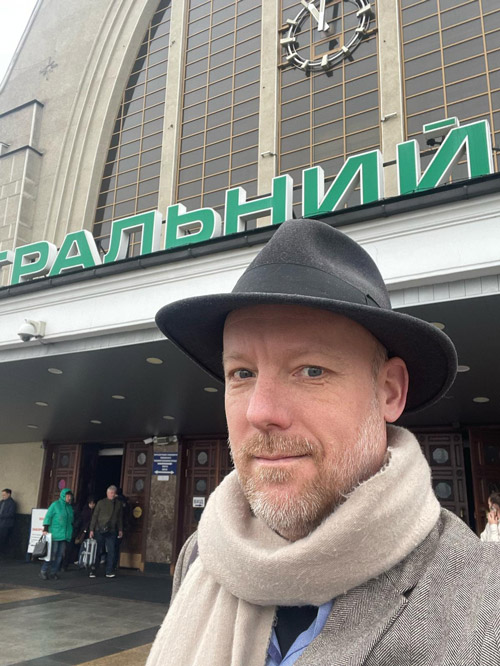
Why it was worthwhile
To let you into the two key learnings right away:
- A feeling of having travelled back in time about 20 years.
- A shock just how "normal" Kyiv feels.
Back in April 2022, in my first substantive article on investing in Ukraine (see "Ukrainian agriculture stocks – land for 15 dollars an acre?"), I wrote:
"Before the conflict in Ukraine broke out, the country was known as an example of how NOT to do economic policies. In all those years since the end of the Soviet Union, Ukraine had never managed to get back to its pre-1990s level of GDP per capita – unlike Russia. Russia already reached its pre-1990s level of GDP in 2006, and it has moved on a lot further from there. Ukraine never quite managed to find the right formulae for advancing economically."
Indeed, stepping out of Kyiv-Pasazhyrskyi railway station and driving across the city centre to my Airbnb apartment just off Independence Square, I couldn't help but remember my trips to Russia in the early 2000s (or to Serbia in 2018 before that country took off for a belated round of rapid growth). There is a palpable sense that Kyiv never developed to quite the extent that other nations in the region did.
It was also striking how life went about seemingly entirely normal, at least during the day.
Kyiv gets into the Western news when it gets hit by missiles or drones, but as the saying goes, a house that isn't on fire isn't news.
I was also a bit lucky, as I did not have a single air raid alarm until my fourth day in town. By that time, I had learned that most people nowadays ignore these alarms. Indeed, check out the brief video I shot when I had boarded my return train and air raid sirens went on.
Have people collectively lost their minds, and was I irresponsible by visiting?
The answer probably sits between these two extremes. Kyiv does get hit by strikes, and people get hit. However, the city is about 300 km (190 miles) from the front line, it now has strong air defences, and strikes are relatively few in number relative to the size of the city. Human beings adapt, and even in a country that is at war, life has to continue somehow. Even now, companies in Kyiv are doing deals, residents refurbish homes and apartments, and some splurge on living the good life.
As I learned by speaking to a broad range of decision-makers, experts, and business leaders, Ukrainian companies and investors are currently reinvesting their profits in Ukraine – for lack of other options.
Refurbishment of real estate continues in some places, but it's suffering from a labour shortage caused by the military mobilisation and the large number of men moving abroad. Large-scale residential development projects have mostly come to a halt.
With my penchant for hosting dinners and bringing people together, I put out a call to my network and had Ukraine Rebuild Newswire do the same with its readership. We had an outstanding evening at Kyiv's best fish restaurant, "Catch", with the dozen people who had signed up. What the restaurant's manager, Larisa, organised for us was certainly on par with what you would usually expect to find only in London, Tokyo or New York.
"Catch" in Kyiv:
The dinner brought together a diverse group with backgrounds including finance, legal, architecture, NGOs, real estate, fund regulation, recruitment, rare earths, and oil and gas. Meeting people was the best way to gather some real-life intelligence about Kyiv and the overall idea of investing in Ukraine's eventual reconstruction.
It included a few surprising nuggets of information, which you can either write off as anecdotal evidence or see as early signs of what's to come.
The challenges and opportunities of reconstruction
"Ukraine is a tax haven", one professional advisor explained to me.
Before the war, foreigners could get a permanent residency in Ukraine by purchasing real estate for USD 100,000. They would subsequently pay just 5% tax on income, and there was no requirement to be physically present.
In fact, the deal still exists today. The tax rate has now gone up to 6% to help support the war, but that's as sweet a deal as you'd be offered in most countries that want to attract new residents.
Opening bank accounts? That's done one day, I was told.
Immediately before the war, Ukraine saw a significant influx of foreigners, and real estate was on the up. This abruptly came to an end, but I was surprised how many foreign "entrepreneur types" I encountered during my visit. There is clearly a wave of early adopters currently looking at possibilities in Ukraine.
Somewhat counterintuitively, some locals echoed a particular kind of enthusiasm.
It'd be easy to have a negative view of Ukraine's outlook based on any number of factors. With men up to the age of 60 (!) having to fear the possibility of being sent to war, you could think that anyone who can leave would want to leave.
However, as one successful, enterprising Ukrainian stated:
"Western Europe is socialism. I lived in several countries over there, and I prefer Ukraine. More opportunity, more freedom."
Ukraine is not for everyone – not now, and not after the shooting ends. However, as a place to live, it's a much better proposition than I had thought.
It all leads to the question, how many of the Ukrainians who moved abroad because of the war will eventually return?
According to the latest figures from the United Nations High Commissioner for Refugees (UNHCR), almost 7m Ukrainian refugees currently live abroad. The exact numbers of those who stayed in the country and those who fled are difficult to pin down. Ukraine hasn't conducted a census since 2001, and the country's statistical service has partially stopped collecting and publishing demographic data because of war-related difficulties.
It's clear that the answer to this question will have a significant effect on any reconstruction effort.
Experience shows that 30% of refugees return home within the first one or two years of a conflict's end, and in some instances up to 50% if strong incentives are provided. Both a huge opportunity and a big challenge lie ahead. On the one hand, the Ukrainian economy – post-war – would benefit massively if several million returned to live and work in the country. On the other hand, the returnees would face a significant housing shortage, as 13% of the country's housing stock reportedly got destroyed.
"When the war ends, you will not be able to buy a bucket of paint anywhere in Europe", one of my dinner attendees told me.
Indeed, the stock market has already anticipated as much. Over the past few months, investors and analysts have been all over (mostly) European stocks that are seen as benefiting from the eventual reconstruction.
Not that anyone currently knows when that will be – nothing has changed for now, and the fighting continues.
It all begs the question, how can you invest and position yourself for a potential Ukraine reconstruction boom?
Ukrainian stocks have rallied already
Without a Ukrainian stock exchange as such, several Ukrainian companies are listed on the Warsaw Stock Exchange. Their prices have surged significantly of late, confirming my ultra-contrarian thesis from April 2022. The stock of MHP (ISIN US55302T2042, UK:MHPC), which had been featured at the 2024 Weird Shit Investing conference, subsequently doubled (the Australian reader who presented the case at the conference in New York will this year attend the event in Hong Kong).
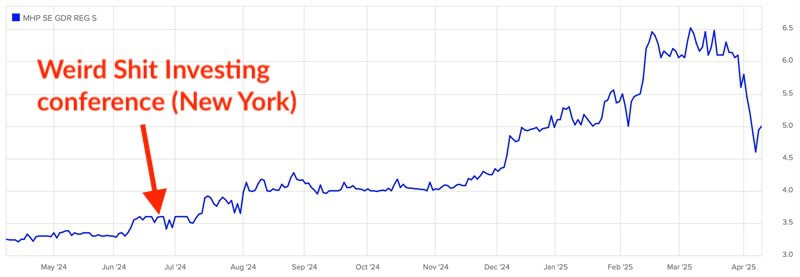
MHP.
Other special cases are listed in London or elsewhere (see also my February 2025 Weekly Dispatch "Rebuilding Ukraine – 99 stock ideas for a peace deal").
The other obvious avenue to pursue is to buy Ukrainian real estate. In some ways, Kyiv is reminiscent of Berlin in the early 2000s, with many city-centre industrial estates seemingly waiting for investors to turn them into apartments, lofts, offices, and restaurant spaces. Yields can be in the double-digits, and Ukraine is an unlevered market with a significant shortage of residential space. Getting access to this type of opportunity obviously requires extra work – unless someone sets up a Ukrainian residential real estate fund (should I?).
Alternatively, investing in Ukraine might be as simple as buying the iShares MSCI Poland ETF (ISIN IE00B4M7GH52, NYSE:EPOL). Of all the countries in the region, Poland will probably benefit the most from peace in Ukraine, both economically and politically. Its equity valuations remain 30% below the ten-year average when measured by price/earnings ratios.
As ever, there are options aplenty, if you know where to look.
Nothing beats visiting!
Researching investments in situ is always interesting, and my trip to Kyiv ranks among the most unique ones I've ever done.
Reality on the ground can be ever so different from the perception elsewhere.
An image search on a large database like Shutterstock returns Kyiv lying in ruins as the first images that pop up. During my week of roaming the city centre, I did not see a single damaged building. As one friend subsequently told me: "Incredible, watching the news I would have assumed that half of Kyiv lays in ruins."
About half of the people I told about this trip in advance warned me about the risk of getting dragged into the Ukrainian military and finding myself at the front before I even know it. Locally, everyone reacted with a mixture of utter disbelief and roaring laughter when I told them about this. They could not fathom that anyone would expect the Ukrainian military to forcefully drag off a foreign visitor and send them fighting.
Once I had a bit more clarity about this issue, I visited a "military pub" to have drinks and sausages among military-type people. I chose "Garnison", the first Ukrainian military pub founded by special forces. Amid military artifacts and photos, I enjoyed dishes made from organic farm products from different regions of Ukraine. I returned to my apartment with a full belly, without having to join the frontlines.
Much of what I experienced in Kyiv was more "normal" than most would have expected.
It's a country at war, with many people dying every day and other sad developments. Amid business meetings and fancy dinners, this reality hits you when you see a mother saying goodbye to her son at the railway station.
Hopefully, this situation will improve soon, and discussions can focus on reconstruction instead. Just when that is going to be remains the big unknown for now.
Enjoy the photo gallery – it's seeing Kyiv through a different lens, so to speak.
Ukraine reconstruction – 99 stocks for peace! (German-language video)
Will peace in Ukraine bring about a great economic miracle, and what are the potential investment opportunities that investors should have on their radar right now?
Reporting live from Kyiv, this interview with Paul Petzelberger of SdK Schutzgemeinschaft der Kapitalanleger e.V. couldn't be more timely, as capital flows into the European capital market are already increasing.
Ukraine reconstruction – 99 stocks for peace! (German-language video)
Will peace in Ukraine bring about a great economic miracle, and what are the potential investment opportunities that investors should have on their radar right now?
Reporting live from Kyiv, this interview with Paul Petzelberger of SdK Schutzgemeinschaft der Kapitalanleger e.V. couldn't be more timely, as capital flows into the European capital market are already increasing.
Did you find this article useful and enjoyable? If you want to read my next articles right when they come out, please sign up to my email list.
Share this post:






